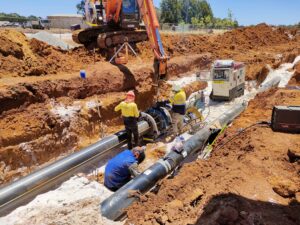Leveraging extensive expertise in Waste Management, Kartik, a seasoned professional, imparts invaluable insights into the intricacies of Queensland’s Waste Management Sector.
What are the key challenges faced by the waste management sector in Queensland?
Since the 2018 introduction of the National Sword, Queensland’s waste and resource recovery sector has undergone a transformative shift, notably propelled by the state’s Waste Management & Resource Recovery Strategy. With a focus on Circular Economy goals, including ambitious targets for landfill diversion and resource recovery, Queensland faces unique challenges due to its vast size, low population density, and regional distances.
The collaborative efforts of government tiers, industry, and stakeholders have embraced constant change, yet challenges persist in resourcing, training, infrastructure, and balancing compliance, operations, and market dynamics. Local Governments and Industry feel the pressure to seamlessly progress towards targets while mitigating environmental impacts.
State consideration of bio-precincts and energy precincts, as well as strategies to manage the interface between land zoned for industry and land zoned for sensitive uses, would be a constructive start.
Planning and development for waste management – How do we get it right given the financial, economic and educational constraints?
The Waste and Recycling Infrastructure Plan is a good reference point. But the success of this plan will be significantly dependent on both the development
of infrastructure hot spots and getting the industry ready in terms of logistics, processing and end market. Financial modelling should not only focus on infrastructure development but also allocate funds into the industry sector for processing, market development; and to better understand the material flow; its supply versus demand in the current economy.
Closing the loop on the Circular Economy – Is it a farfetched concept or more achievable with the right planning?
State Circular Economy targets are ambitious, yet industry understanding is limited, with some policies prioritising environmental impact over operational challenges and end-use considerations. Achieving Circular Economy goals necessitates a broader, stronger collaborative approach, material flow analysis to gauge demand, and streamlined policies for desired outcomes. Failing this, we risk merely “Chasing the Horizon.” The waste and resource industry holds significant Circular Economy potential, and Local Government and community-led initiatives can accelerate adoption statewide, presenting a substantial opportunity for positive change.
How do we work collaboratively across the tiers of Industry to achieve a holistic approach to waste reduction and management?
In the evolving waste sector, collaborative discussions among governments, contractors, consultants, and stakeholders are fostering a shared vision. However, gaps persist in project planning and fund distribution. To close the loop effectively, a holistic and collaborative approach is essential in executing the Infrastructure Plan. Involving various stakeholders in decision-making and securing funds is crucial, whether in supplying feedstock, managing logistics, processing, or utilising end-products. Interconnections among waste, resources, sustainability, and fiscal reliability are more evident now. A comprehensive review at all government levels is imperative, considering the correlations, dependencies, and advantages across strategies. This broader perspective will drive largescale collaboration at the strategic level, enhancing operational efficiencies.





